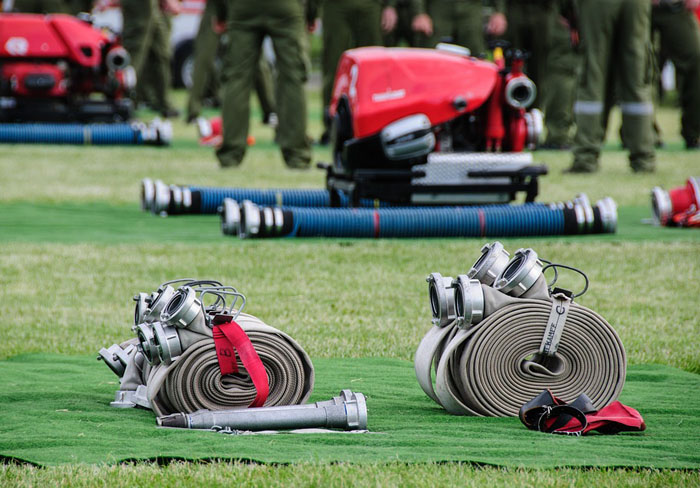The Fire & Rescue NSW department (FRNSW) requires new recruits to undergo fitness assessments as part of the recruitment process. Below is some information about the fitness requirements and standards. In 2013, the NSW Fire and Rescue replaced the beep test (standard required was level 9.6) with a new test (the PAT) based on research by the University of Wollongong's Centre for Human and Applied Physiology. This information is presented for discussion - for up to date information see official sources.
Assessment Tests
Recruits for the Fire & Rescue NSW are required to undergo the Physical Aptitude Test (PAT), which consists of tasks which simulate work carried out by firefighters in emergencies, and is used to determine if a candidate's level of fitness is suitable for a career as a firefighter. (details retrieved April 2013)
The PAT is a highly validated assessment designed specifically to determine individuals who are physiologically capable of tolerating the work-related stress of fire fighting. The PAT is performed as a circuit while wearing Personal Protective Equipment - including coat, over-trousers, lightweight helmet, general purpose gloves and non-operational Self-Contained Breathing Apparatus (without face mask). Candidates must not run at any point during the testing, and can even rest if necessary.
 fire fighting equipment
fire fighting equipmentThe test is divided into three stages.
Stage 1
- Reduced visibility search.
- Ladder simulation.
Stage 2
- Single-sided jerry can carry.
- Stair climb with single-sided jerry can carry.
- Rescue tool static holds.
- Repeated hose drag.
Stage 3
- Fire attack simulation.
- Firefighter rescue.
Related Pages
- How To Become A Firefighter in Australia — important tips for any firefighter around the world
- Hydration for fire fighters
- See the pages on fitness testing for: Navy, Army, Air Force, Law Enforcement (Police), and general forces tests.
- Poll: Should women have the same fitness testing standards as men?
- Video of forces fitness testing


 Current Events
Current Events